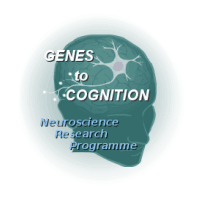G2C::Transcriptome::Data
Hippocampal Transcriptome Differential Expression Analysis
The hippocampal transcriptome was measured in mice carrying mutations and compared with wild type mice. Differential expression was assessed by Illumina MouseWG-6 v2 microarrays. List of differentially expressed genes are shown and raw data is available in ArrayExpress (Accession ID is E-MTAB-6104)
S.G.N. Grant and the G2C Consortium
Corresponding email: Seth.Grant@ed.ac.uk
Purpose
Find genes which are differentially expressed in the hippocampus of the mutant mice relative to wild type controls.
Procedure
Mice were exported from the breeding facility to a holding facility within the lab three days prior to collection of the brain samples, to allow time for stress response genes induced through movement to subside.
All animals were sacrificed by cervical dislocation, and the hippocampi were manually dissected on ice, and snap frozen in liquid nitrogen.Samples were stored in -80 freezers until required.
Mouse brain samples were homogenised using the Kontes Cordless Pellet Pestle system.Total RNA was extracted using the Qiagen miRNeasy kit, snap frozen using liquid nitrogen and stored at −80°C. Microarray processing was performed by the Wellcome Trust Sanger Institute’s Microarray facility. The Illumina TotalPrep-96 RNA Amplification kit was used for reverse transcription, amplification, and biotinylation of the RNA prior to hybridisation. The microarrays used were the Illumina MouseWG-6 v2 series. Hybridization, washing, and staining were performed according to standard Illlumina protocol. The microarrays were imaged using the Illumina BeadArray Reader. Images from the scanner were processed using the BeadStudio software.
The mouse microarray data was read into R using the Bioconductor package Lumi (Du et al., 2008) (RRID:SCR_012781) and re-annotated based on a published analysis (Barbosa-Morais et al., 2010). The detectionCall function from the lumi package was used to drop probes undetected by the microarrays. Probes rated as having a ‘bad’ quality (according to the re-annotation package) were dropped, as were those with the coding zone given as ‘Transcriptomic?’. A subset of the probes annotated as bad/transcriptomic were kept because they target the mutated genes, these were ILMN_1216696, ILMN_1251040, ILMN_1227040, ILMN_1251040, ILMN_1255147, ILMN_2655895, ILMN_1216696, ILMN_1243523 and ILMN_2548201. A variance stabilizing transformation was applied followed by quantile normalization (using the lumiT and lumiN functions).
Differential expression was calculated separately for each mutant line using the eBayes function from the limma package. Age, gender and hybridisation batch were included in the model if these varied within the cohort.
Transcriptome data has been deposited in ArrayExpress (Accession ID is E-MTAB-6104)
Material
- Kontes Pellet Pestle Cordless Motor (7495400000)
- Sigma-Aldrich Blue Polypropylene Pellet Pestles (Z359947-100EA)
- Qiagen miRNeasy kit (217004)
- Agilent RNA 6000 Nano Kit (5067-1511)
- Illumina TotalPrep-96 RNA Amplification Kit (4393543)
- Illumina MouseWG2 Qiagen Buffer RLT Plus (1053393)
Quality Control
Following extraction RNA was run on an Agilent 2100 Bioanalyzer to confirm RIN values were over 7 for each sample
Data
Table shown below shows the genes most differentially expressed in the Ywhaq mice.
